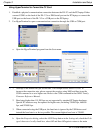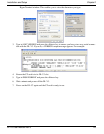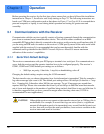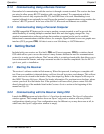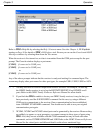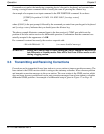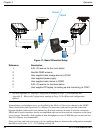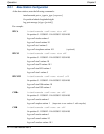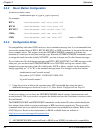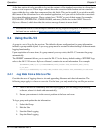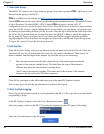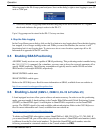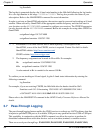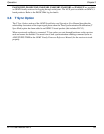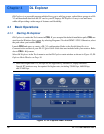
50 DL-V3 User Manual Rev 3
Chapter 3 Operation
3.3.2 Rover Station Configuration
At the rover station, enter:
interfacemode port rx_type tx_type [responses]
For example:
RTCA interfacemode com2 rtca none off
RTCM interfacemode com2 rtcm none off
RTCMV3 interfacemode com2 rtcmv3 none off
CMR+ interfacemode com2 cmr none off
CMR interfacemode com2 cmr none off (same as CMR+)
3.3.3 Configuration Notes
For compatibility with other GNSS receivers, and to minimize message size, it is recommended that
you use the standard form of RTCA, RTCM, RTCMV3 or CMR corrections as shown in the base and
rover examples above. This requires using the INTERFACEMODE command to dedicate one
direction of a serial port to only that message type. When the INTERFACEMODE command is used
to change the mode from the default, NOVATEL, you can no longer use NovAtel format messages.
If you wish to mix NovAtel format messages and RTCA, RTCM, RTCMV3 or CMR messages on the
same port, you can leave the INTERFACEMODE set to NOVATEL and log out variants of the
standard correction messages with a NovAtel header. ASCII or binary variants can be requested by
simply appending an "A" or "B" to the standard message name. For example on the base station:
interfacemode com2 novatel novatel
fix position 51.11358042 -114.04358013 1059.4105
log com2 rtcm1b ontime 2
Using the receiver in this mode consumes more CPU bandwidth than using the native
differential messages as shown in Section 3.3.1, Base Station Configuration on Page 49.
At the rover station you can leave the INTERFACEMODE default settings (interfacemode com2
novatel novatel). The rover receiver recognizes the default and uses the corrections it receives with a
NovAtel header.
The PSRDIFFSOURCE and RTKSOURCE commands set the station ID values which identify the
base stations from which to accept pseudorange or RTK corrections respectively. They are useful
commands when the rover station is receiving corrections from multiple base stations. Refer to the
GNSS Reference Book for more information on SBAS, available from our website at:
http://www.novatel.com/support/docupdates.htm
All PSRDIFFSOURCE entries fall back to SBAS (even NONE) for backwards compatibility.



